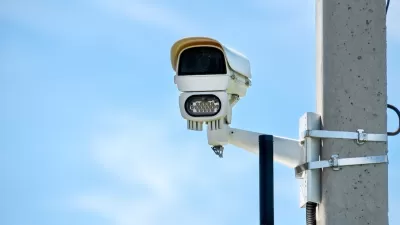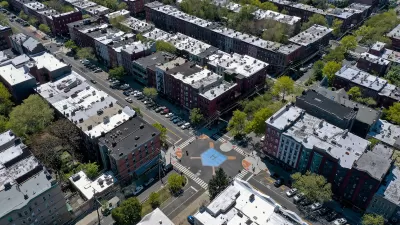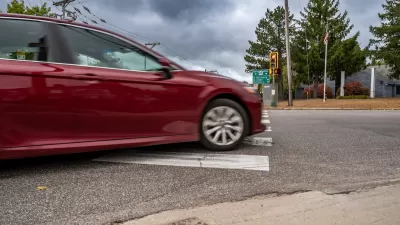Toronto has gone back to the drawing board for more effective strategies and tactics for reducing traffic fatalities after its first attempt failed to produce any measurable results.
"City council has voted to reboot its road-safety plan, as its first attempt failed to reduce traffic deaths," reports Ben Spurr from Toronto.
"Three years after endorsing the city’s first Vision Zero strategy aimed at eliminating road fatalities, councillors voted unanimously Tuesday to adopt Vision Zero 2.0," according to Spurr.
"Under the enhanced plan, the city will reduce speed limits on dozens of arterial roads across Toronto, install more sidewalks and implement more pedestrian head-start signals, among other measures."
In the year following the implementation of the previous version of the plan, pedestrian and cyclist fatalities actually jumped, from 45 to 47.
FULL STORY: ‘You hesitate, you lose lives’: Toronto votes for more aggressive Vision Zero road safety plan

Trump Administration Could Effectively End Housing Voucher Program
Federal officials are eyeing major cuts to the Section 8 program that helps millions of low-income households pay rent.

Planetizen Federal Action Tracker
A weekly monitor of how Trump’s orders and actions are impacting planners and planning in America.

The 120 Year Old Tiny Home Villages That Sheltered San Francisco’s Earthquake Refugees
More than a century ago, San Francisco mobilized to house thousands of residents displaced by the 1906 earthquake. Could their strategy offer a model for the present?

HSR Reaches Key Settlement in Northern California City
The state’s high-speed rail authority reached an agreement with Millbrae, a key city on the train’s proposed route to San Francisco.

Washington State Legislature Passes Parking Reform Bill
A bill that would limit parking requirements for new developments is headed to the governor’s desk.

Missouri Law Would Ban Protections for Housing Voucher Users
A state law seeks to overturn source-of-income discrimination bans passed by several Missouri cities.
Urban Design for Planners 1: Software Tools
This six-course series explores essential urban design concepts using open source software and equips planners with the tools they need to participate fully in the urban design process.
Planning for Universal Design
Learn the tools for implementing Universal Design in planning regulations.
Ada County Highway District
Clanton & Associates, Inc.
Jessamine County Fiscal Court
Institute for Housing and Urban Development Studies (IHS)
City of Grandview
Harvard GSD Executive Education
Toledo-Lucas County Plan Commissions
Salt Lake City
NYU Wagner Graduate School of Public Service





























